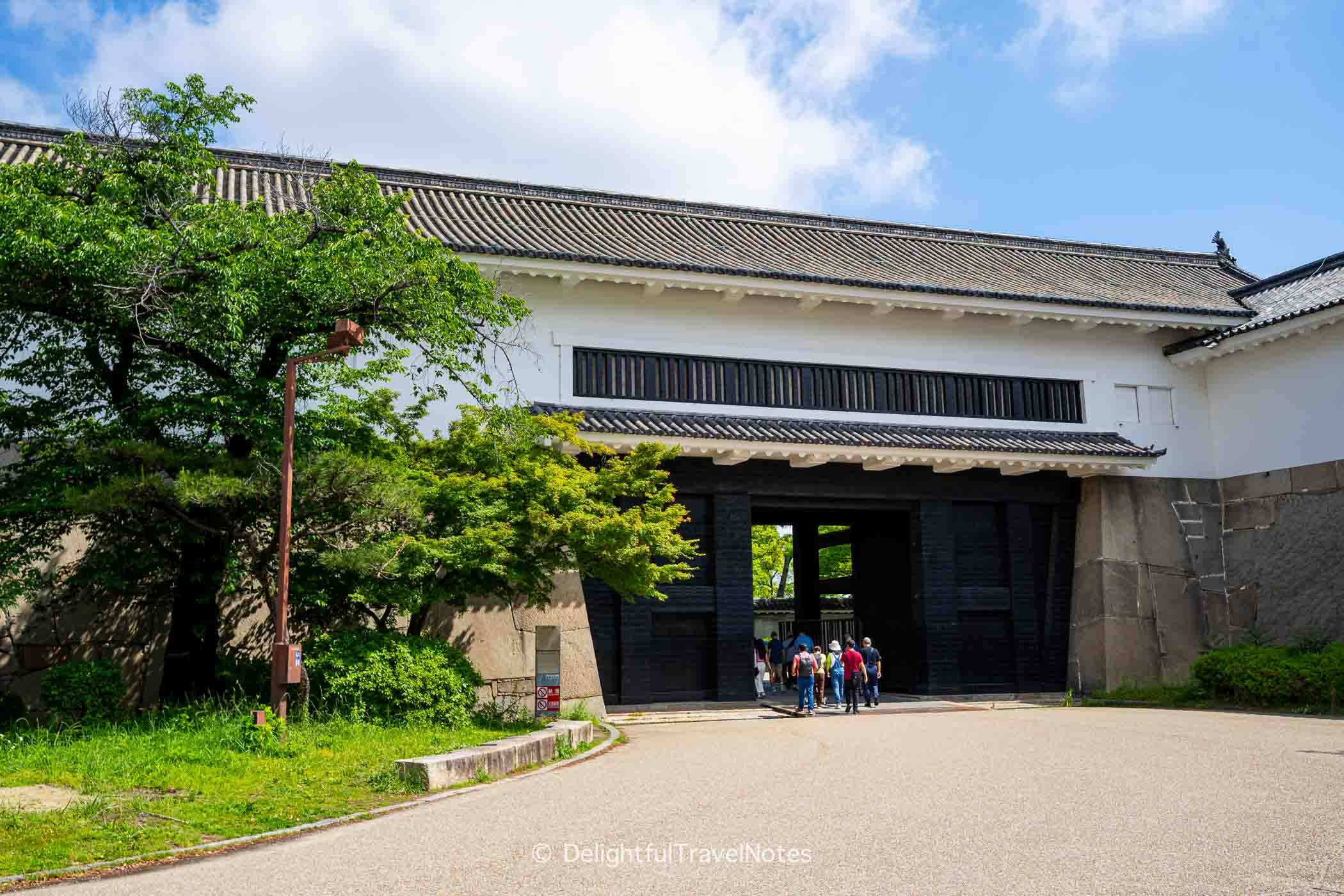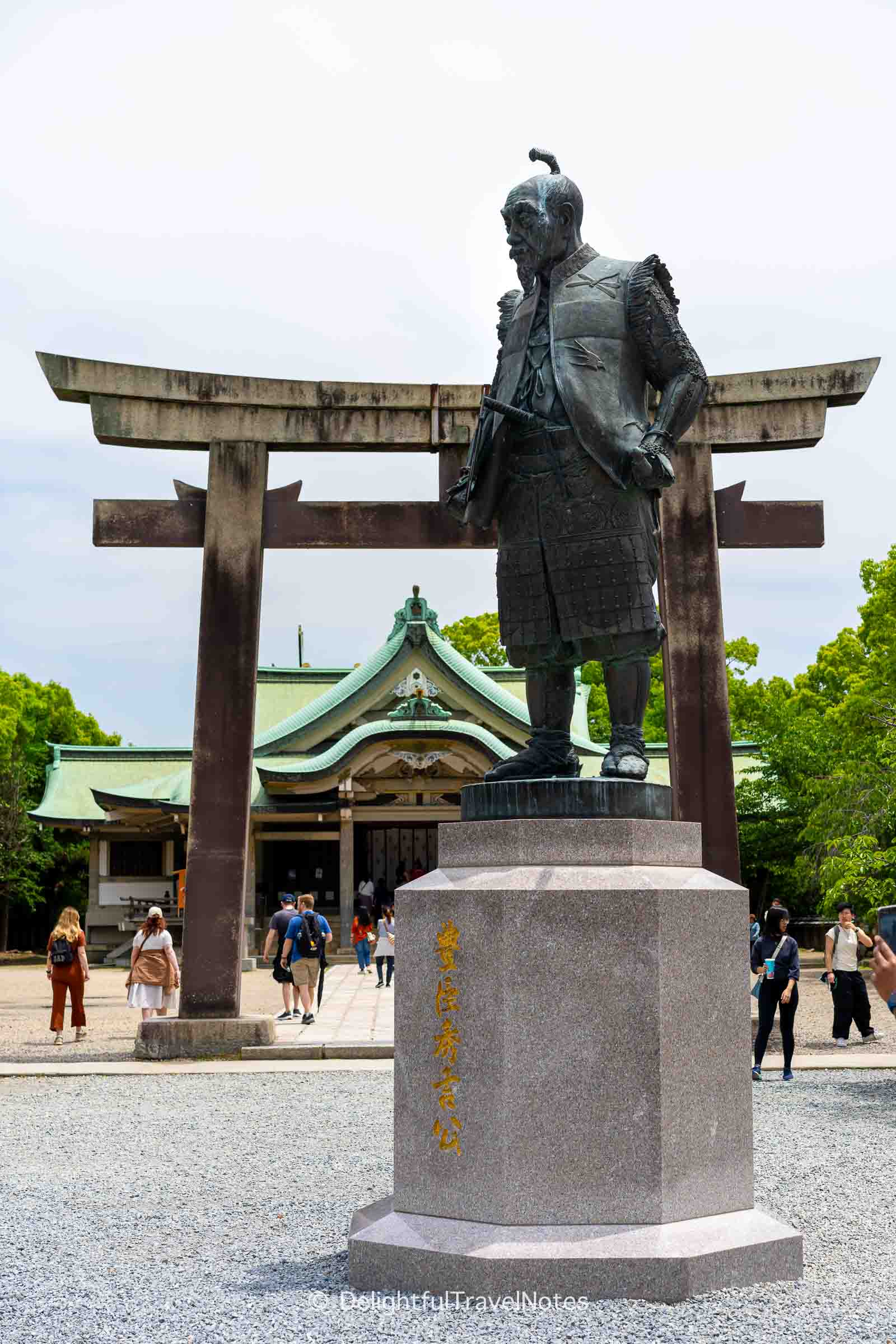Osaka Castle Visiting Guide: Skip It or See It
Osaka Castle is a famous landmark with a rich history, especially during the unification of Japan in the late 16th century. In this travel guide, we want to share essential tips you need to know and discuss if it is worth a visit or who would enjoy it.
Many seem to say Osaka is a concrete reconstruction which isn’t worth seeing compared to Himeji Castle, one of the few original castles left in Japan. We would like to provide our thoughts so you can weigh in yourself whether you should add this castle to your Osaka itinerary or not.

What To Expect
The castle features impressive stone walls, moats, turrets, and a reconstructed main tower that now serves as a museum. These structure were once part of a complexed defensive system to resist attacks. The castle is also surrounded by a large park which is beautiful, especially during the cherry blossom season. Don’t just go to the main tower, I recommend spending time exploring the grounds as well.

Osaka Castle witnessed significant historical events and battles throughout its existence. It was originally constructed in 1583 by Toyotomi Hideyoshi, a powerful daimyo and one of Japan’s great unifiers, and it became the stronghold of the Toyotomi clan. It later fell to Tokugawa Ieyasu during the Siege of Osaka (1614-1615), marking the end of Toyotomi clan and solidifying the power of Tokugawa clan.
Growing up as a casual manga reader, I became familiar with the names of three important figures during Japan’s unification: Nobunaga, Toyotomi, and Tokugawa. As a result, I was quite interested in seeing Osaka Castle.

The current main tower of Osaka Castle is a concrete reproduction. I was aware of this before my visit, but it did not diminish the value of the experience for me. I think it’s good to see places with my own eyes to truly grasp their scale and atmosphere, learn and draw my own conclusion whether I like them or not.

Inside, it has been transformed into a museum dedicated to the castle’s history and the life of Toyotomi Hideyoshi. The museum has eight floors, with elevators available to take visitors up to the fifth floor, though there is often a line to use them. We chose to take the stairs from the first floor, stopping at each floor to view the exhibits. The eighth floor serves as an observation deck, offering panoramic views of Osaka.

Among the exhibits, we liked the section on the life of Toyotomi Hideyoshi the most. Another highlight was the impressive painting screens depicting the Summer Battle of Osaka, which ultimately led to the castle’s fall. Overall, the museum is quite well-curated, providing a thorough narrative of the castle’s history.
During our travels in Japan, we noticed a strong emphasis on the history of arts and crafts but felt that detailed accounts of historical events were sometimes lacking. Therefore, the information provided at Osaka Castle was helpful to us.

So if you are interested in architecture and value learning a little bit of the feudal history of Japan, as well as manage your expectations, I think you will enjoy the visit to Osaka Castle. Don’t go expecting something grand and glamorous inside the main keep, like the ornate interiors and luxurious furnishings in European castles.
Whatever You Do, Buy The Tickets Online
The lines to the ticket windows on the castle grounds are very long and you may wait for 30 minutes in line or more. In contrast, purchasing tickets online is very easy and convenient. There is no need to buy tickets far in advance since they are not time-restricted. We bought our tickets on the grounds, received the QR codes in our email immediately, and used them to enter right away.

You can easily buy tickets on the official site or on Klook. Don’t waste your time waiting in lines to buy the tickets!
As the castle is a prominent structure in Osaka and very easy to access, it can be crowded. We got to the castle grounds around 9:30 – 10 am and it was already crowded outside as well as inside the main tower. The museum floors were packed, and moving through certain areas was slow due to the number of people.
Although we would have enjoyed our visit more if it had been less busy, we balanced our Osaka itinerary with other less-visited spots such as The Open-Air Museum of Old Farmhouses. This approach allowed us to have more tolerance for crowded attractions.

Nearby Attractions
Within the grounds, Hokoku Shrine is dedicated to Toyotomi Hideyoshi. We stopped by after touring the main keep and obtained a goshuin. This shrine has several nice goshuincho (the books to store goshuin) designs.

There is a mini shuttle that runs around the grounds of Osaka Castle. Each ride costs about 300 yen, and it’s a fun and convenient way to get around if your feet are tired from walking. It’s quite a walk from the outer gate to the main keep and back, not to mention the large park surrounding it. We used this mini shuttle when exiting the castle grounds. One of the stop is in front of this Lawson convenience store.

Within walking distance (across the street from the Lawson I mentioned above) is the Osaka Museum of History. The museum is quite beautiful and some exhibits are well done, such as the one about the ancient period and the ruins of Naniwa Palace. However, we think the more recent periods aren’t very thorough. English translation is not available for all information on display.
More Osaka Travel Guides
If you found this article helpful, please consider sharing it on Pinterest! Thank you so much!


